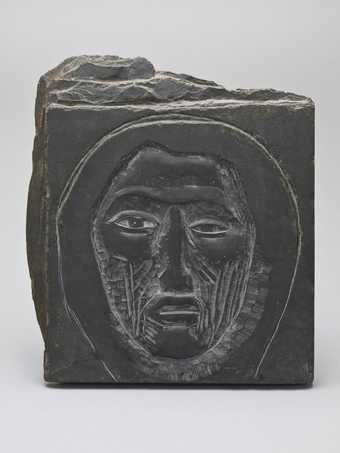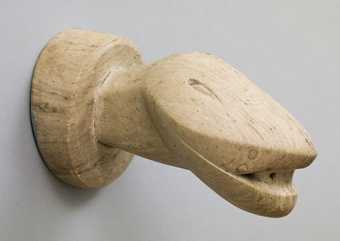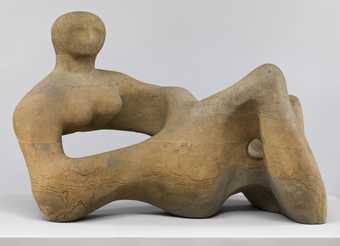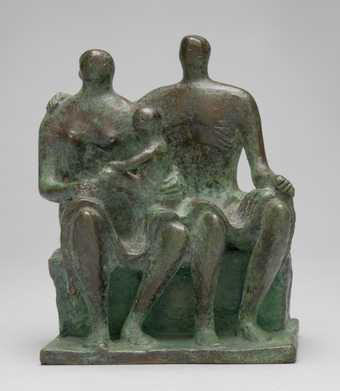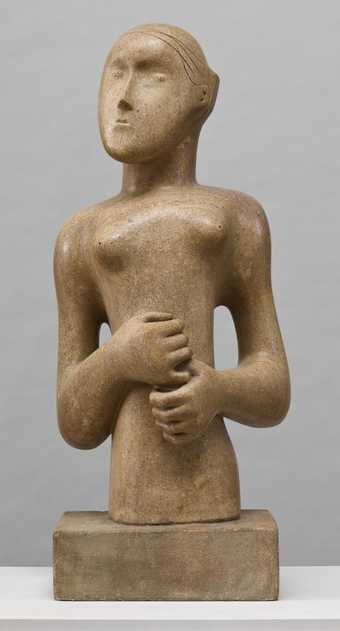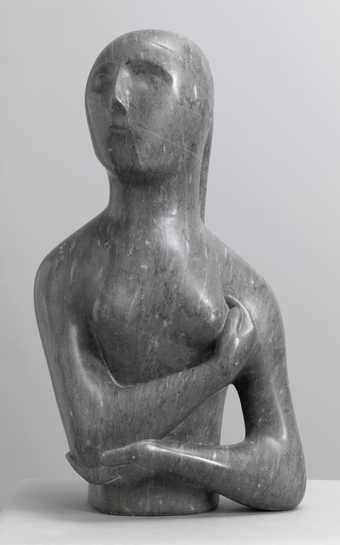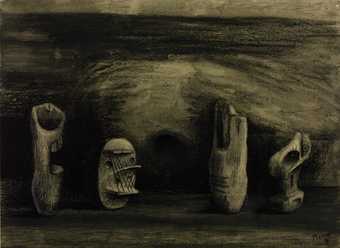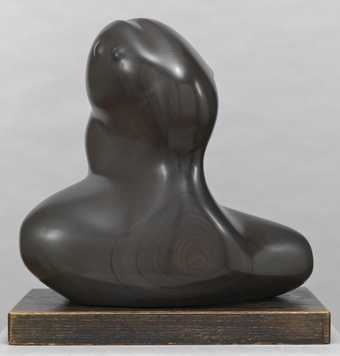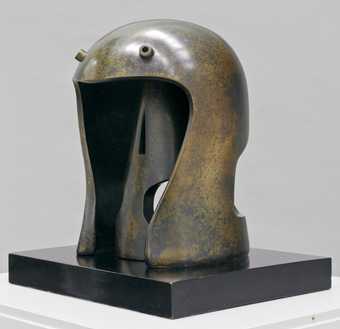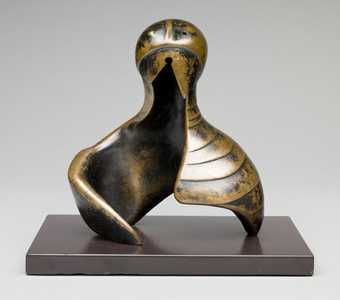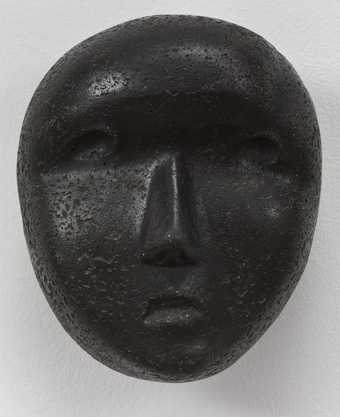Not on display
- Artist
- Henry Moore OM, CH 1898–1986
- Medium
- Gneiss stone
- Dimensions
- Object: 212 × 190 × 87 mm
- Collection
- Tate
- Acquisition
- Purchased with assistance from the Art Fund 1993
- Reference
- T06696
Summary
Between 1924 and 1930 Henry Moore made at least a dozen masks. Carved in stone or cast in concrete, they conformed to what was considered a 'primitive' aesthetic, that is to say one that drew on cultural sources outside classical antiquity and the Renaissance. Roger Fry, an influential commentator greatly admired by Moore, detected within these sources a formal freedom and vitality missing in most nineteenth century European art. Moore himself often commented on the vitality of 'primitive' art, regarding it not merely as 'art before it got smothered in trimmings and surface decoration' but also art which spoke 'the common world language of forms'. In this case his interests seem to have been in Pre-Columbian sculpture.
For this mask Moore chose a green stone with fine white veining. It has been carved and hand polished. The front surface, which is generally smooth, is scattered with small, shallow areas of rough stone giving it a worn appearance and drawing attention to the material of the stone itself. The back surface has been hollowed out and shows rough tooling marks. The holes used to denote eyes, nostrils and mouth run right through the block.
The facial features are asymmetrical, a characteristic which Moore claimed to have first noticed in the Pre-Columbian masks from Mexico he had seen at the British Museum, and subsequently observed in actual faces. The right eye is a different shape to the left, the nostrils are not aligned, nor are the ears, and the mouth is tilted. Such subtle modulations of form combine with variations in the treatment of the surface and the inherent irregularities of the stone to accentuate the uniqueness of every viewpoint around the object.
The nose is rendered by two deeply incised grooves. This use of an actual material absence to suggest a physical presence appears again in the eyebrows and the eyes. It was a feature that Moore was to develop in the early 1930s, particularly to suggest women's breasts.
Further reading:
David Sylvester (ed.), Henry Moore, Complete Sculpture Volume 1 Sculpture 1921-48, London 1944, reproduced p.9, fig.54
Robert Melville, Henry Moore Sculpture and Drawings 1921-1969, London 1970
Toby Treves
March 2000
Does this text contain inaccurate information or language that you feel we should improve or change? We would like to hear from you.
Display caption
Moore carved a disembodied head in alabaster in 1923 and a small mask in 1924. But it was not until 1928 that he showed a serious interest in the making of masks. In that year Moore bought a French book on pre-Columbian sculpture which included many illustrations of masks. During 1928-9 Moore made eight masks, four cast in concrete and four carved in stone. In this stone mask the eyes, nostrils and mouth are holes which have been drilled right through the material. This device of drilling a hole points to future developments in Moore's work because the sculptor came to believe that 'A hole can have as much shape-meaning as a solid mass.'
Gallery label, August 2004
Does this text contain inaccurate information or language that you feel we should improve or change? We would like to hear from you.
Catalogue entry
Explore
- objects(23,571)
-
- clothing and personal items(5,879)
-
- mask(172)
- body(4,878)
-
- head / face(2,497)
You might like
-
Henry Moore OM, CH Relief Head
1923 -
Henry Moore OM, CH Head of Serpent
1927 -
Henry Moore OM, CH Recumbent Figure
1938 -
Henry Moore OM, CH Maquette for Family Group
1943, cast 1944–5 -
Henry Moore OM, CH Girl
1931 -
Henry Moore OM, CH Figure
1931 -
Henry Moore OM, CH Half-Figure
1932 -
Henry Moore OM, CH Four Forms, drawing for a Sculpture
1938 -
Henry Moore OM, CH Composition
1932 -
Henry Moore OM, CH Reclining Figure
1939, cast 1959 -
Henry Moore OM, CH Helmet Head No.1
1950, cast 1960 -
Henry Moore OM, CH Four-Piece Composition: Reclining Figure
1934 -
Henry Moore OM, CH Helmet Head and Shoulders
1952, cast date unknown -
Henry Moore OM, CH Reclining Figure
1939 -
Henry Moore OM, CH Mask
1929


